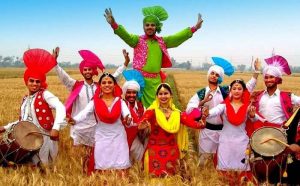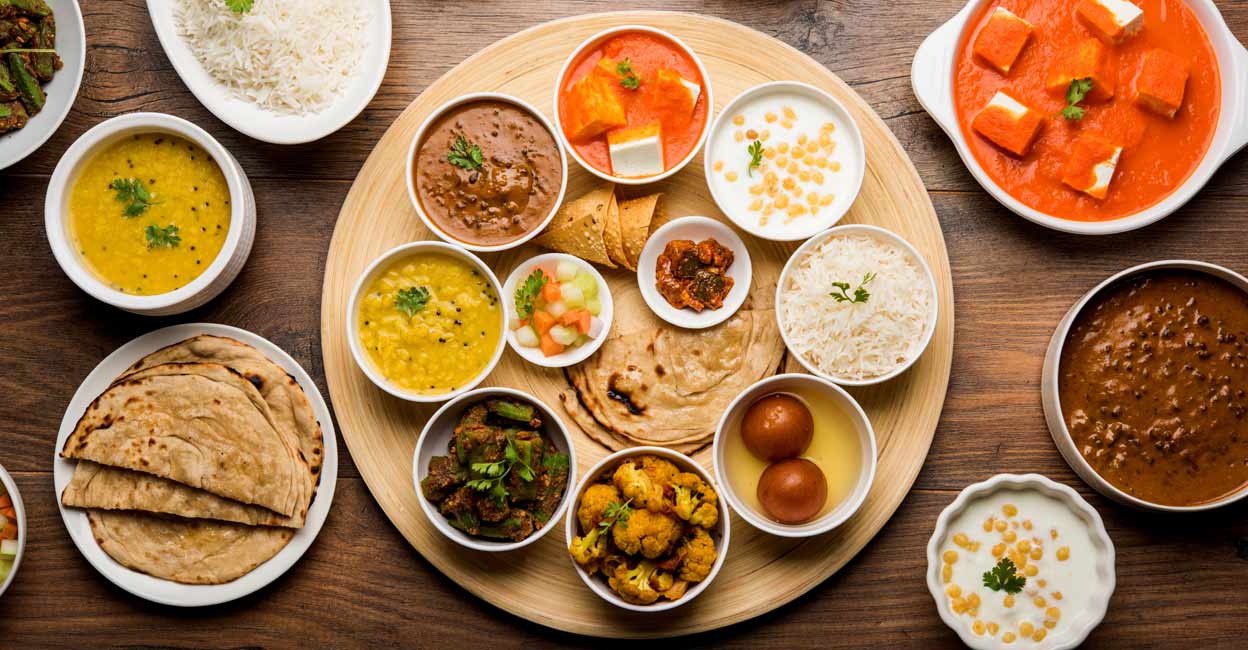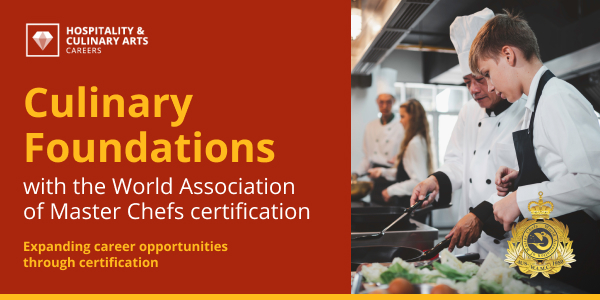Article by Master Chef Irfan khan
President and Secretary General
WAMC India
If you have not already, you can Read Part One Here
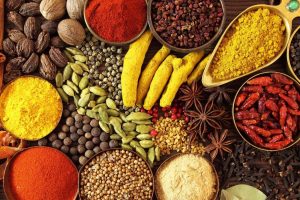 Indian Spices are world-famous for their flavor, fine texture, and Aroma. every single spice used in Indian dishes carries some or other nutritional as well as medicinal properties.
Indian Spices are world-famous for their flavor, fine texture, and Aroma. every single spice used in Indian dishes carries some or other nutritional as well as medicinal properties.
In India, food is one of the most important parts of religious ceremonies. The role of food in religious culture is an important part of showing respect among their communities and many of these religions obey the religious commandments, hence food is prepared in different ways. In India, Food is often used as a means of retaining their cultural identity. People from different cultural backgrounds eat different foods.
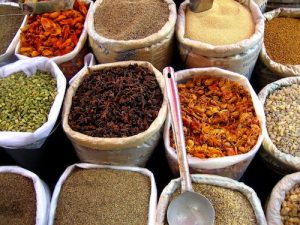 Indian food is different from the rest of the world not only in taste but also in cooking methods. It reflects a perfect blend of various cultures and Traditions.
Indian food is different from the rest of the world not only in taste but also in cooking methods. It reflects a perfect blend of various cultures and Traditions.
Each region of India has its own food/dishes/cuisine.
Northern Indian cuisine reflects a strong Mughal influence. It is characterized by a high use of dairy: milk, paneer (an Indian mild cheese), ghee (clarified butter), and yogurt are all used. meat, are a distinctive Northern snack. Clay ovens known as tandoors are widely used in North India, and dishes like Tandoori Chicken and Naan bread their distinctive charcoal flavor. A significant number of Northern dishes make regular appearances on Indian menus.
Whereas Western Indian cuisine is distinguished by the geographic and historical particulars of its three main regions: Maharashtra, Gujarat, and Goa. Maharashtra’s coastal location is responsible for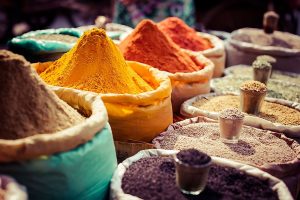 its fish and coconut milk-dominant cuisine. Gujarati cuisine is mostly vegetarian and has an underlying sweetness to many of its dishes due to Chinese influence. Since the dry climate of this region produces smaller vegetables, this region is well known for its chutneys, which are popular Indian condiments that use cooked, fresh, or pickled vegetables and fruits with sweet, sour, or spicy flavors. Goa acted as a major trade port and colony for Portugal, resulting in a distinctive and unique blend of Indian and Portuguese culinary elements. Goan cuisine uses pork and beef with greater frequency than other regional cuisines in India. Vinegar is also a characteristic ingredient of Goan cuisine, another result of Portuguese influence. The prevalence of coconut milk, coconut paste, and fish in Goan cuisine results from its coastal location. Vindaloo is a traditional Goan dish that is an Indian restaurant mainstay, its name deriving from Vinho de Alho, a Portuguese marinade consisting primarily of garlic, wine, vinegar, and chilies.
its fish and coconut milk-dominant cuisine. Gujarati cuisine is mostly vegetarian and has an underlying sweetness to many of its dishes due to Chinese influence. Since the dry climate of this region produces smaller vegetables, this region is well known for its chutneys, which are popular Indian condiments that use cooked, fresh, or pickled vegetables and fruits with sweet, sour, or spicy flavors. Goa acted as a major trade port and colony for Portugal, resulting in a distinctive and unique blend of Indian and Portuguese culinary elements. Goan cuisine uses pork and beef with greater frequency than other regional cuisines in India. Vinegar is also a characteristic ingredient of Goan cuisine, another result of Portuguese influence. The prevalence of coconut milk, coconut paste, and fish in Goan cuisine results from its coastal location. Vindaloo is a traditional Goan dish that is an Indian restaurant mainstay, its name deriving from Vinho de Alho, a Portuguese marinade consisting primarily of garlic, wine, vinegar, and chilies.
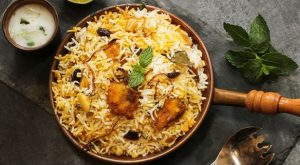 Let’s talk about Eastern Indian cuisine. it is primarily known for its desserts. These desserts are not only favored by other regions in India but are frequently found at Indian restaurants, their light sweetness making an excellent finale to a meal. Rasgulla is a popular sweet treat consisting of semolina and cheese curd (chenna) balls that are boiled in a light sugar syrup. Eastern dishes favor mustard seeds, poppy seeds, and mustard oil, giving dishes a light pungency. Rice and fish also feature prominently in Eastern cuisine. Overall, Eastern dishes are more lightly spiced than those from other regions of India.
Let’s talk about Eastern Indian cuisine. it is primarily known for its desserts. These desserts are not only favored by other regions in India but are frequently found at Indian restaurants, their light sweetness making an excellent finale to a meal. Rasgulla is a popular sweet treat consisting of semolina and cheese curd (chenna) balls that are boiled in a light sugar syrup. Eastern dishes favor mustard seeds, poppy seeds, and mustard oil, giving dishes a light pungency. Rice and fish also feature prominently in Eastern cuisine. Overall, Eastern dishes are more lightly spiced than those from other regions of India.
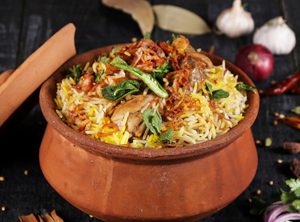 On the other hand, Southern Indian cuisine is not typically found on many Indian restaurant menus and differs greatly from other regions. Its “curries” contrast differently in their textures and can typically be categorized according to the drier consistency, or those favoring a more soupy or stew-like presentation. Poriyals, dry curries consisting of a variety of vegetables and spices, accompany rice dishes. Sambars, rasams, and kootus, three common stew-like dishes, each differs in their primary ingredients and degrees of liquidity. Sambars are essentially tamarind-flavored pea and vegetable stews that are more watery than curries from other regions but are thicker than rasams. Rasams are more similar to soups in their consistency and are composed primarily of tomato, tamarind, and a myriad of spices.
On the other hand, Southern Indian cuisine is not typically found on many Indian restaurant menus and differs greatly from other regions. Its “curries” contrast differently in their textures and can typically be categorized according to the drier consistency, or those favoring a more soupy or stew-like presentation. Poriyals, dry curries consisting of a variety of vegetables and spices, accompany rice dishes. Sambars, rasams, and kootus, three common stew-like dishes, each differs in their primary ingredients and degrees of liquidity. Sambars are essentially tamarind-flavored pea and vegetable stews that are more watery than curries from other regions but are thicker than rasams. Rasams are more similar to soups in their consistency and are composed primarily of tomato, tamarind, and a myriad of spices.
Indian cuisine includes a variety of spices, and every spice has many health benefits. Including a variety of spices and vegetables in your diet is important for living healthily. Eat local and seasonal vegetables and fruits at the right time for good health and strong immunity.
